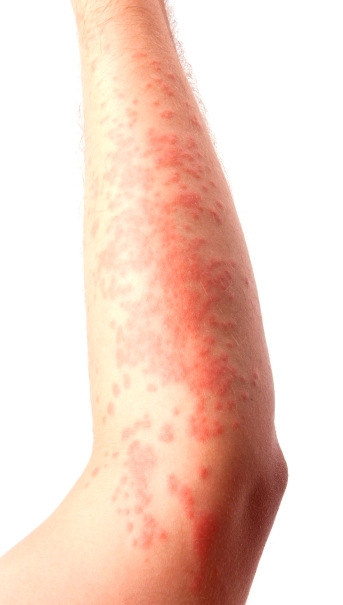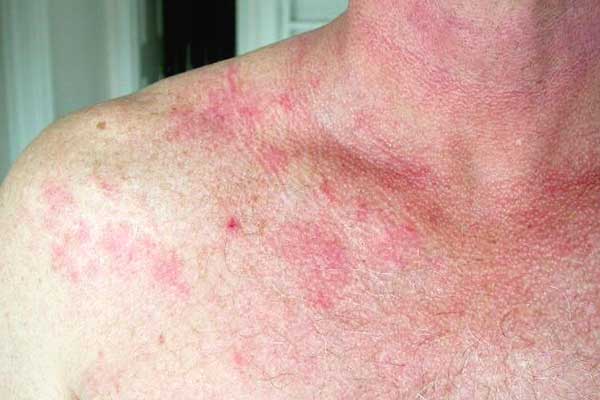can skin fungus cause hives Itchy skin (pruritus): causes, treatment, and home remedies
Everyone knows that mold can be a nuisance in our homes, but did you know that it can also cause hives? Yes, you read that right! Hives are not just a result of allergies or insect bites. Exposure to household mold can also trigger this uncomfortable skin reaction. We all want our homes to be safe and healthy, so it’s important to understand the potential dangers of mold and how it can impact our well-being.
Hives From Household Mold Exposure
 When mold spores are inhaled or come into contact with our skin, they can cause an allergic reaction. In some individuals, this allergic reaction manifests as hives. Hives, also known as urticaria, are raised, itchy, and red welts that appear on the skin. They can vary in size and shape, often resembling mosquito bites. The itching can be extremely uncomfortable and may even interfere with day-to-day activities.
When mold spores are inhaled or come into contact with our skin, they can cause an allergic reaction. In some individuals, this allergic reaction manifests as hives. Hives, also known as urticaria, are raised, itchy, and red welts that appear on the skin. They can vary in size and shape, often resembling mosquito bites. The itching can be extremely uncomfortable and may even interfere with day-to-day activities.
It’s important to note that not everyone will develop hives from mold exposure. Some individuals may be more sensitive to mold spores and have a heightened allergic response. Others may not experience any symptoms at all. However, if you notice hives developing after being exposed to mold, it’s crucial to address the underlying mold issue in your home to prevent further reactions.
To prevent hives and other allergic reactions, it’s essential to minimize mold growth in your living environment. Here are a few tips to help you keep your home mold-free:
- Reduce humidity: Mold thrives in moist environments, so keeping the humidity levels in your home low can help prevent its growth. Use a dehumidifier or air conditioner to regulate humidity levels, especially in areas prone to dampness like basements and bathrooms.
- Fix leaks promptly: Any water leaks or plumbing issues should be addressed immediately. Mold can start growing within 24-48 hours of water damage, so quick action is essential.
- Improve ventilation: Proper airflow can help prevent moisture buildup, which in turn reduces the likelihood of mold growth. Open windows, use exhaust fans, and ensure that your home’s ventilation system is in good working condition.
- Clean and dry thoroughly: Regularly clean and dry areas prone to moisture, such as showers, sinks, and kitchen countertops. Don’t forget to clean and dry any items that have come into contact with water or dampness, such as towels or clothing.
Cat Fungal Infection Skin - Mange In Cats: Causes, Symptoms
 Mange is a common skin condition in cats caused by fungal infections. Like humans, cats can also be affected by various types of fungi that can cause itching, hair loss, and skin lesions. Mange is highly contagious among cats and can spread rapidly if left untreated. As responsible pet owners, it’s crucial to recognize the signs of mange and take prompt action to ensure the well-being of our feline companions.
Mange is a common skin condition in cats caused by fungal infections. Like humans, cats can also be affected by various types of fungi that can cause itching, hair loss, and skin lesions. Mange is highly contagious among cats and can spread rapidly if left untreated. As responsible pet owners, it’s crucial to recognize the signs of mange and take prompt action to ensure the well-being of our feline companions.
If you notice your cat scratching excessively, developing bald patches, or showing signs of skin inflammation, it’s essential to consult a veterinarian. A veterinarian will be able to diagnose the fungal infection and prescribe appropriate treatment. It’s important not to attempt self-diagnosis or use over-the-counter products without professional guidance, as this can potentially worsen the condition or lead to unnecessary side effects.
Preventing mange in cats involves maintaining good overall hygiene and minimizing exposure to potential sources of infection. Regular grooming, including brushing and bathing, can help keep your cat’s skin healthy and reduce the risk of fungal infections. Additionally, keeping your cat’s living environment clean and free from excessive moisture can also prevent the growth of fungi that cause mange.
Remember, the health and well-being of our pets are in our hands. If you suspect your cat may have a fungal skin infection like mange, don’t hesitate to seek professional veterinary care. With the right treatment and preventive measures, you can provide your cat with a happier, healthier life free from the discomfort of skin infections.
In conclusion, mold exposure can lead to hives in susceptible individuals, highlighting the importance of maintaining a mold-free home environment. On the other hand, cats can develop fungal skin infections like mange, which requires prompt veterinary attention. By understanding these potential health risks and taking appropriate measures, we can ensure the well-being of both ourselves and our beloved feline companions. Remember to prioritize hygiene, cleanliness, and timely medical care to keep everyone healthy and happy!
If you are searching about Cat Fungal Infection Skin - Mange In Cats: Causes, Symptoms you’ve came to the right place. We have 5 Pictures about Cat Fungal Infection Skin - Mange In Cats: Causes, Symptoms like Hives From Household Mold Exposure, Hives and Candida – What You Don’t Know May Surprise You and also Hives From Household Mold Exposure. Here it is:
Cat Fungal Infection Skin - Mange In Cats: Causes, Symptoms
 amiranais.blogspot.cominfection fungal fungus cats caused claw cnri mange sciencephoto malassezia organisms ringworm
amiranais.blogspot.cominfection fungal fungus cats caused claw cnri mange sciencephoto malassezia organisms ringworm
Itchy Skin (pruritus): Causes, Treatment, And Home Remedies
 www.medicalnewstoday.comhives itchy itching allergic pruritus
www.medicalnewstoday.comhives itchy itching allergic pruritus
Hives From Household Mold Exposure
 www.mold-advisor.comhives mold exposure advisor household arm boys
www.mold-advisor.comhives mold exposure advisor household arm boys
Fungus On Skin
 orangemolds.comHives And Candida – What You Don’t Know May Surprise You
orangemolds.comHives And Candida – What You Don’t Know May Surprise You
 crushcandida.comhives candida surprise don know
crushcandida.comhives candida surprise don know
Hives candida surprise don know. Hives from household mold exposure. Hives itchy itching allergic pruritus